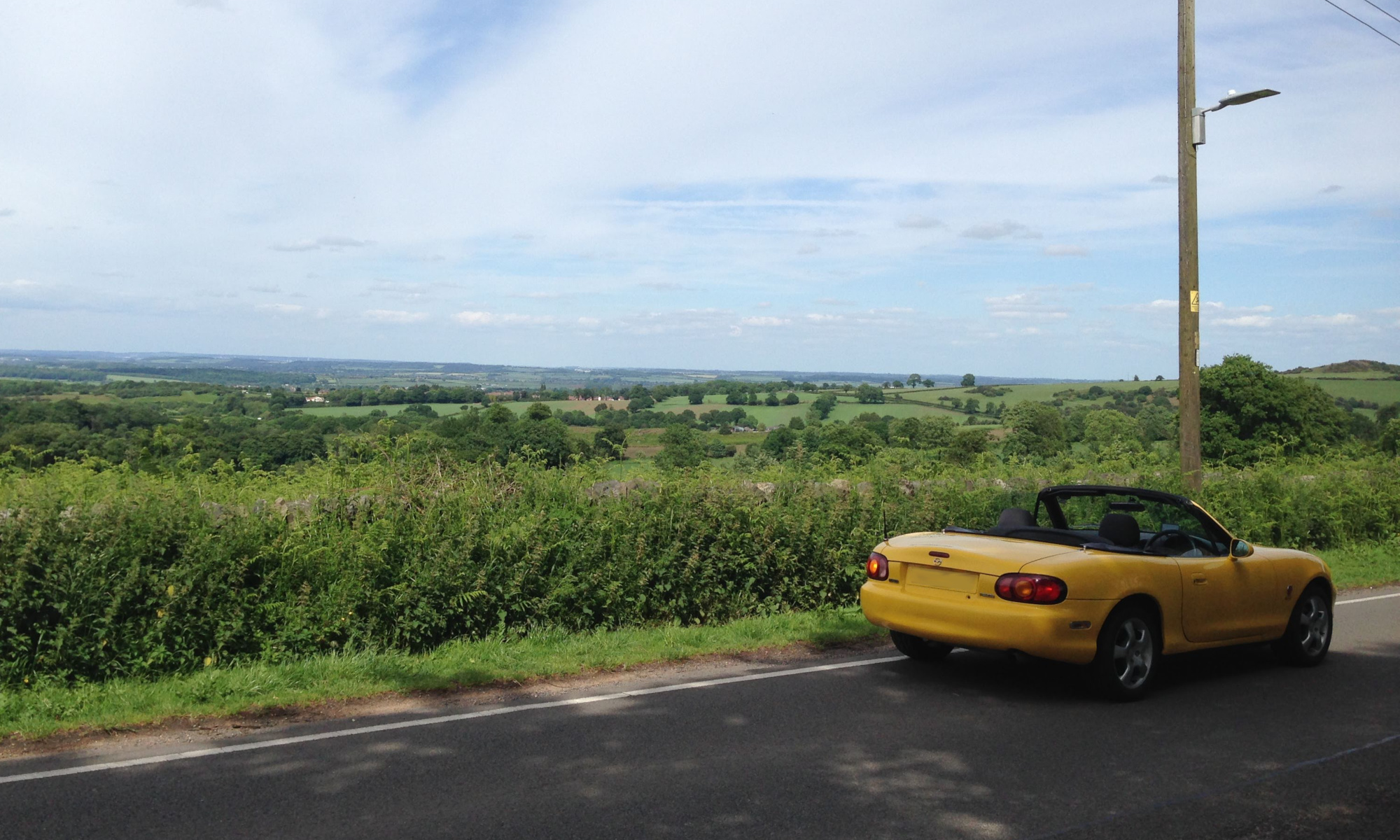Significant Speeds
Critical Speed \(V_{\text{crit}} \)
At the critical speed \( V_{\text{crit}} \), a small input to the steering lead to divergence of the responses , i.e. \(\dfrac{1}{R}\), \(r\), \(\dfrac{V^2}{R}\) and \(\beta\).
With reference to equations (5.13) to (5.17), the critical speed can be found from
\[
\begin{align}
Q &= N_\beta Y_r \; – N_\beta m V \; – Y_\beta N_r\\
&= (aC_F -bC_R)\dfrac{1}{V}(aC_F -bC_R) -(aC_F -bC_R)mV -(C_F +C_R)\dfrac{1}{V} (a^2C_F + b^2 C_R) = 0
\end{align}
\]
\[
V_{\text{crit}} =\sqrt{ \dfrac{N_\beta(VY_r)- Y_\beta(VN_r)}{N_\beta m} } = \sqrt{- \dfrac{1}{K}} \tag{5.56}
\]
Usually the first term, \( N_\beta Y_r \), is negligible in comparison to other terms [1].
For an understeering car, \(N_\beta> 0\) and \(K>0 \), there is no critical speed.
For a neutral steer car, \(N_\beta= 0\) and \( K =0\), the critical speed is at infinite velocity.
For an oversteering car, the critical speed exists.

Characteristic speed \(V_{char}\)
The characteristic speed is a measure of understeer.
The smaller the characteristic speed \(V_{char}\), the greater the degree of understeer.
\[
V_{char} = \sqrt{\dfrac{1}{K}}
\]
The general steer equation and the equation of motion for moments in steady state
\[
\left\{
\begin{array}{l}
\delta = \dfrac{l}{R} + ( -\alpha_F + \alpha_R) \\
0 = \; \mathrm{N}_{\beta} \beta+\mathrm{N}_{\mathrm{r}} \mathrm{r}+\mathrm{N}_{\delta} \delta = (a C_F \; – b C_R)\beta + \dfrac{1}{V}(a^2C_F + b^2C_R) r + (-a C_F)\delta
\end{array}
\right.
\]
For the neutral steer car, since \(N_\beta = 0 \) the moment balance equation become
\[
N_\delta \delta_{Acker} = \; – N_r r
\]
For the understeer car \(N_\beta > 0 \)
\[
0 = N_\beta \beta + N_r r + N_\delta \delta
\]
At the characteristic speed, the Ackermann term \(\dfrac{l}{R}\) equals the slip angle difference term \(-\alpha_F + \alpha_R \).
Therefore, for the understeer car running at the same velocity and turn radius as the neutral steer car
\[
N_\delta (2\delta_{Acker}) = 2 (-N_r r)
\]
Assuming the same yaw damping \(N_r = \dfrac{1}{V} (a^2C_F + b^2 C_R) \), \(N_r r\) is the same between the neutral steer car and the understeer car. Hence
\[
N_\delta (2\delta_{Acker}) = -N_r r -N_\beta \beta
\]
i.e.
\[
N_\beta \beta = N_r r
\]
At the characteristic speed, the yaw angle response to control input \(\dfrac{r}{\delta}\) is the half of the corresponding neutral steer car at the same velocity.

Reference
[1] W. Milliken and D. Milliken, Race Car Vehicle Dynamics.
